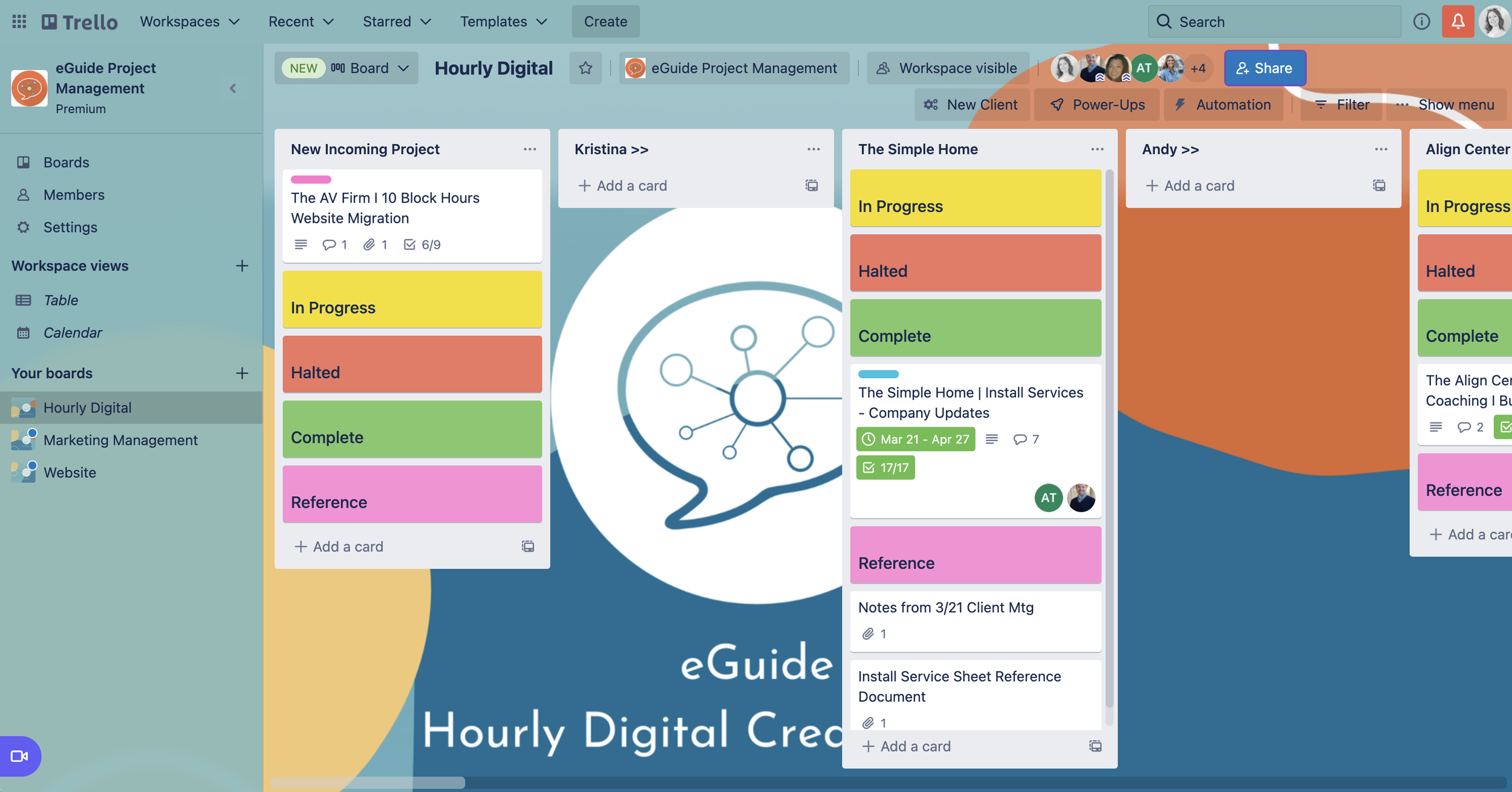Using Trello To Power Your Next Event
What Conference Planning Looks Like Today
For most event production agencies, the early stages of planning a multiday event can seem more like systems administration instead of event planning. As more and more corporations continue to tighten security around sharing access to systems, agency planners and meeting professionals are expected to be super users of Google AND Microsoft. Not only that, but they are also expected to carry multiple email addresses, follow client and agency sharing policies, onboard with a multitude of other platforms, and do it all without missing a beat.
I’m exhausted just typing it out.
Gone are the days of the voice-only conference calls, now large scale events are driven by screen sharing and universal deck updates. Decision makers no longer what to hear a description of what is planned, they want to see it come to life right before their eyes. This can easily cause link CHAOS when each aspect of the event has it’s own dedicated deck.
So, how do you keep it all straight?
Pre-planning with Trello
If you are responsible for multiple programs throughout the year, and especially if you are working with multiple end clients or agencies, Trello can easily provide an architecture for event planning.
eGuide recommends a “less-is-more” approach that allows you to see multiple programs from a birds-eye view. BUT, before we get into the nitty gritty, let’s define a few key definitions.
What is a Trello Board?
Trello boards are like the white board for your events. How you organize information on the board is up to you, but we find the key to success is largely dependent on architecture. Every board is comprised with cascading list and cards, and the best part is EVERYTHING has the ability to be dragged and dropped.
What is a Trello List?
Lists are where organization starts to take shape. In traditional Kanban project management you are going to be using lists as “steps of the process”, but we are going to flip this on it’s head in just a second. For now, just know that lists are like categories for your cards. If a board was an airport, then lists would be the terminals.
What is a Trello Card?
Carrying through the analogy started above, cards are airplanes. They carry important information from terminal to terminal, and even can fly from board to board. Cards are where the magic happens. They can include checklists, due dates, comments, and links to a multitude of external sources.
What is a Card Cover?
Typically card covers a secondary function for Trello boards, but for our recommendation card covers are important. Utlizing this feature, a card can become a label within a list. Back to our airport — a card turned into a label is like a gate. You can have multiple gates within a terminal, and planes will be parked at each gate. While card covers will still have card functionality, we recommend keeping them organizational in nature.
Trello Architecture To Make Planning Easy
So, now that you have a better sense of the anatomy of a Trello board, it will be a lot easier to explain how one board can house cascading logistics for multiple events
By using the architecture below you will be able to easily create an easy to reference guide for each event, no matter where the documents are being linked from. Instead of reacclimating yourself with different folder structures, all you will need to do is link out to YOUR Trello board once the document is created.
So, Follow along:
Create a board called “Event Management”
Create a list with the event name
Create Card Covers with the following labels:
In Progress
Halted
Reference
Complete
Create cards for planning tasks (this is where you can get as granular or broad as you’d like. If you’d like a card specifically for “Contracting” that can apply to multiple contracts. If you want a card specifically to reference one contract, then you can structure as such)
Link and reference materials using the Trello Attchement Feature to a clearly named card. (This is where you can take any link that has been shared with you, and put it in an easy to find place).
Organize reference cards and project cards into appropriate labels (this should be within the same list)
Repeat this process for all events currently being planned.
Customizing Trello To Make it Your Own
We’ve only scratched the surface on all that Trello is able to do. eGuide has used Trello now for 5+ years and we are still finding ways to add powerups and program automations to make our work more efficient. Our recommendation is to start with a manual process first, and then look for the questions and comments that arise. Anything that starts with a “It would be nice if Trello could…” or “I wonder if we would be able to…” are great signs to explore. Chances are, if you have the question, someone else has too, and if you need a guide to help you through. We are here to help!
Help Someone. Have Fun, Be You. Learn & Teach. Finish What You Start.



